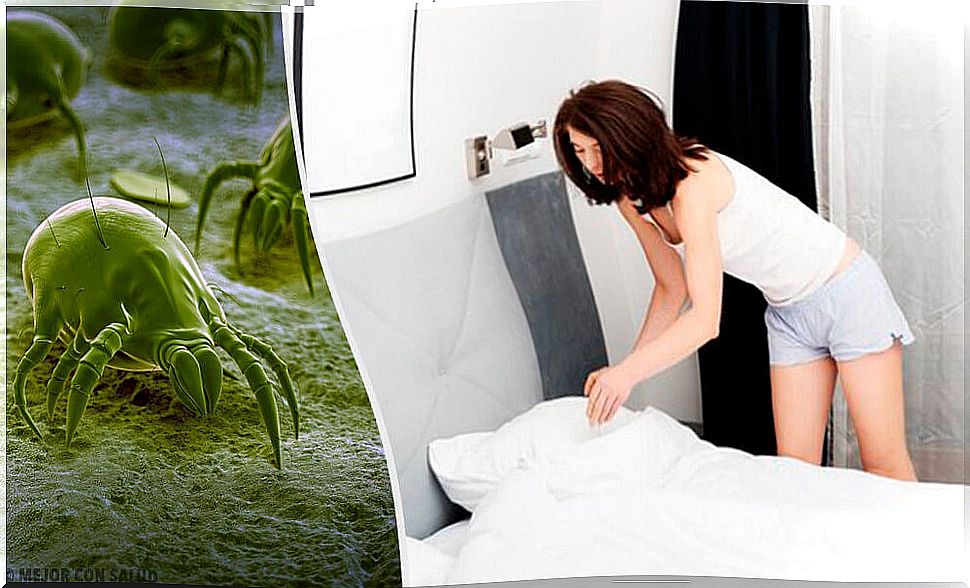Living With A Dust Allergy
Actually, when we talk about allergy to dust, we refer to allergy to mites that live in this environment, specifically . You are not allergic to the dust itself, but to those tiny insects that live among its particles.
For those who suffer from it, it is difficult to live with this condition on a daily basis. To cope with it, certain changes must be implemented in what seems logical and habitual. If you want to have a better quality of life, in this article we detail some measures to overcome this condition. Take note!
What are mites?
The dust mite is a small organism that can only be seen through a microscope. It has a great capacity to develop in different areas, although there are conditions that are very favorable for it.
These beings are known to require relatively high humidity to survive and a warm temperature. Therefore, they are more frequent in tropical coastal areas and are less present in mountain environments.
The best seasons for them are the transitional ones, such as fall and spring. It is for this reason that those allergic to dust can see their condition exacerbated at both times of the year. The exacerbation is often falsely attributed to an alleged increase in dust in the environment.
Forms of presentation of dust allergy
Those who suffer from this pathology, in addition to learning to live with a dust allergy, must learn to identify and treat the symptoms that arise from there. This allergy can take three clinical forms:
- Conjunctivitis. It is the inflammation of the ocular conjunctiva. Symptoms are tearing, itchy eyes, and swollen eyelids. Vision is impaired due to inflammation and the eye turns red.
- Rhinitis. It is the inflammation of the lining of the nose. When there is rhinitis, the anterior nasal drip called rhinorrhea, nasal itching and sneezing appear. According to an article in the Journal of the Bolivian Society of Pediatrics, there is usually a clear and transparent discharge from the nostrils. This condition can also obstruct the upper airway, making it difficult to breathe momentarily.
- Asthma. The most serious form of dust allergy is the development of allergic asthma. The bronchi close in reaction to the external agent and the patient suffers from dyspnea, that is, shortness of breath. A bronchial whistling accompanies asthma as a characteristic sound of breathing.

Measures to take to live with a dust allergy
Living with a dust allergy involves producing changes in the environment. When the affected person is a child, the parents will be in charge of making the necessary adjustments in the environment to make them less allergic. The general measures to apply to live with this condition are:
- Do not spread dust when cleaning. For this, it is best to perform furniture hygiene with damp rags.
- Anti-dust bedding. There are pillowcases and mattress covers with special materials that repel dust and prevent it from adhering.
- Wash bedding once a week. Washing should be with hot water. This way it is easier to eliminate the mite.
- Lower the humidity. A dehumidifier is a good option for people with a dust allergy. The objective is to reduce the humidity of the environment to less than half.
- Aspire. Part of the cleaning routine should include yes or yes a vacuum cleaner. If the device has a microfilter or HEPA filter (high efficiency), even better.
- Carpets forbidden. If the house where the allergic person lives has rugs, it is best to remove them. Carpets, due to their humidity and temperature, are the ideal place for the proliferation of mites.
- Washable soft toys for children. In the allergic pediatric age, toys can carry mites. The object most prone to their proliferation is the stuffed animal. Therefore, stuffed animals that cannot be washed with hot water should be avoided.

Medical treatments
In addition to the measures to be implemented in the environment to live with a dust allergy, if you suffer from the disease, it is most likely that the specialist will prescribe some medications. They are not drugs for continuous use, but they can be used for a long time.
According to a Mayo Clinic publication, medical treatments to improve dust allergy symptoms include the following:
- Antihistamines. Medications such as loratadine or diphenhydramine decrease the production of the substances that trigger the allergic reaction in the human body.
- Corticosteroids. Both orally, as a nasal spray or in asthma inhalers, they are a therapeutic option. These include betamethasone, dexamethasone, prednisone, and fluticasone.
- Decongestants. To manage rhinitis symptoms, your doctor may prescribe decongestants in combination with an antihistamine. They cannot be used for a long time; however, they help to get out of symptoms more quickly.
- Immunotherapy. Allergy doctors, when diagnosed with a dust allergy, may suggest immunization therapy. This consists of the systematic application of vaccines with low doses of mite substances. Vaccines are given for a few years until the body is desensitized to what is causing the allergy.
As you can see, there are several alternatives to mitigate and prevent dust allergy symptoms. We know that it is very difficult to have a completely clean house, but if you follow these recommendations and make some adjustments to your habits, you will achieve a better quality of life. Go ahead and try it!









